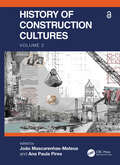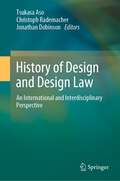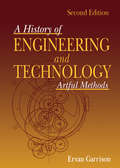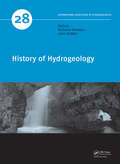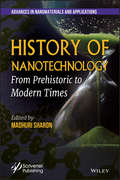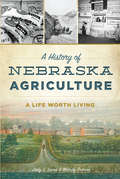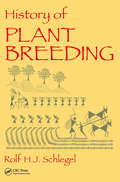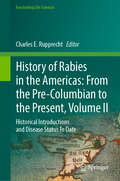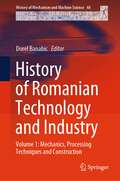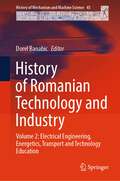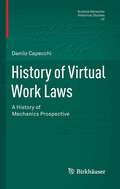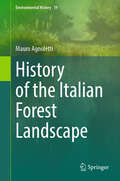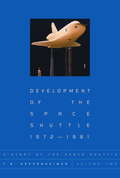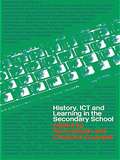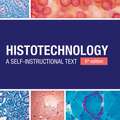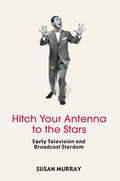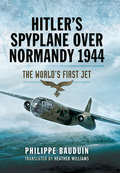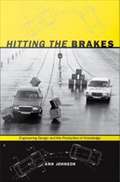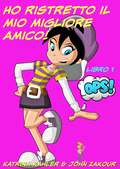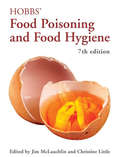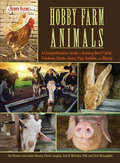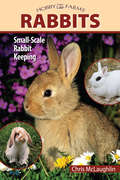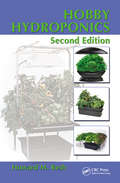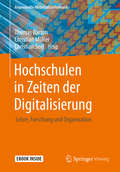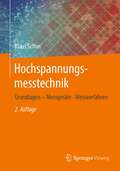- Table View
- List View
History of Construction Cultures Volume 2: Proceedings of the 7th International Congress on Construction History (7ICCH 2021), July 12-16, 2021, Lisbon, Portugal
by João Mascarenhas-MateusVolume 2 of History of Construction Cultures contains papers presented at the 7ICCH – Seventh International Congress on Construction History, held at the Lisbon School of Architecture, Portugal, from 12 to 16 July, 2021. The conference has been organized by the Lisbon School of Architecture (FAUL), NOVA School of Social Sciences and Humanities, the Portuguese Society for Construction History Studies and the University of the Azores. The contributions cover the wide interdisciplinary spectrum of Construction History and consist on the most recent advances in theory and practical case studies analysis, following themes such as: - epistemological issues; - building actors; - building materials; - building machines, tools and equipment; - construction processes; - building services and techniques ; -structural theory and analysis ; - political, social and economic aspects; - knowledge transfer and cultural translation of construction cultures. Furthermore, papers presented at thematic sessions aim at covering important problematics, historical periods and different regions of the globe, opening new directions for Construction History research. We are what we build and how we build; thus, the study of Construction History is now more than ever at the centre of current debates as to the shape of a sustainable future for humankind. Therefore, History of Construction Cultures is a critical and indispensable work to expand our understanding of the ways in which everyday building activities have been perceived and experienced in different cultures, from ancient times to our century and all over the world.
History of Design and Design Law: An International and Interdisciplinary Perspective
by Christoph Rademacher Tsukasa Aso Jonathan DobinsonFor the first time, this book provides an up-to-date history of product design and product design law covering 17 countries — Japan, Korea, China, Singapore, the United Kingdom, Germany, France, Italy, the Nordic countries (Denmark, Finland, Iceland, Norway and Sweden), Russia, the United States, Brazil and Australia — selected for their innovative or influential approach to design or design protection.Each country is the subject of two chapters — one on the history of design and the other on the history of design law — authored by experts in design and intellectual property (IP) law. This unique interdisciplinary approach explains why and how various national design protection systems (that can include design, copyright, trade mark, competition and civil laws) developed, making it an ideal book for students, researchers and lawyers. The book also serves as an international survey of different national policy and legal responses to historical developments and specific design and legal issues allowing readers to consider their advantages and disadvantages — and so is also recommended for policy and law makers, as well as organizations that administer IP rights. Topics include the subject matter of design protection; procedural and substantive requirements; design registration; infringement; and the overlap of design rights and other IP rights. The chapters on design history provide further context to the historical development of these legal concepts by considering major design movements, key designers and iconic designs and the current state of design. The chapters highlight the connected and often complementary relationship between the two histories, not only for each country, but at the regional and international level, often as a result of government policies, trade, colonialism, immigration and globalisation. Design and design practice continue to become more global and evolve with developments in technology. At the same time, design laws are not internationally harmonized and continue to develop at the national level, with a number of significant changes occurring in recent years. This timely book shows how the lessons of the past continue to inform the future direction of design and the legal systems developed to protect it.
History of Engineering and Technology: Artful Methods
by Ervan G. GarrisonA History of Engineering and Technology offers a highly readable account of the development of engineering and technology from prehistory to the present. The author uses the broad sweep of history as a backdrop for expositions of important benchmarks in engineered works and products. The book presents early hydraulic engineering in the context of modern ideas relating technology to the complex social structures that arose in Sumeria and Egypt. It also provides a comprehensive and objective review of the greatest engineering civilization of antiquity-Greco-Roman-and discusses the western world's attempts to recover its achievements after the Middle Ages. The flowering of French and British engineered technology is portrayed through the men and machines that led to today's industrial society. Other topics discussed in A History of Engineering and Technology include the evolution of the modern ship, engineering in modern war and medicine, the advent of the computer, and the Space Age. Over 100 illustrations and the book's in-depth presentation of key theoretical developments make this volume essential as a college textbook for students, as well as an important reference resource for libraries, engineers, and scientists.
History of Hydrogeology (IAH - International Contributions to Hydrogeology)
by John Mather Nicholas HowdenLessons can be learnt from the past; from time to time it is useful for practitioners to look back over the historical developments of their science. Hydrogeology has developed from humble beginnings into the broad church of investigatory procedures which collectively form the modern-day hydrogeologist‘s tool box. Hydrogeology remains a branch of t
History of Nanotechnology: From Prehistoric to Modern Times
by Madhuri SharonThe scientific knowledge of nanoscience and nanotechnology is regarded to be a modern sciencethat evolved after Feynman’s concept was formulated in the 1950s. However, Faraday and other scientists in the 19th century showed the science behind the small and its relation to optical properties. And it is now accepted that knowledge of using nanoparticles prevailed during the medieval period as well. This book takes the readers on a fascinating journey writing the history of nanotechnology based on the evidence of existence from the prehistoric period right up to the contemporary times. Nature utilized nanotechnology during the origin and expansion of the universe and especially in the evolution of living beings on our planet. Early civilizations in different parts of globe fabricated and used materials without having perception of their actual size. This unique historical view systematically evaluates the development of various applications of nanotechnology through the ages and the science behind it. Some of the issues covered include:• How old is nanotechnology? • Pre-historic evidence of knowledge of nanotechnology• Nanotechnology in ancient India• Ayurvedic Bhasma as nanomedicine • Mayan’s knowledge of nanotechnology• Nanotechnology during the Roman empire and medieval period• European knowledge in the 19th century • Modern and contemporary history of nanotechnology This book is compilation of existence of scientific knowledge even of the people who existed before there were schools, universities and organized teaching. The author has scoured literature dating back to Mayan … as well as historical observations A systematic evaluation of development of various applications of nanotechnology and the science behind it is presented in this book under following headings-How old is Nanotechnology -Pre-historic Evidence of Knowledge of Nanotechnology-Nanotechnology in Ancient India-Ayurvedic Bhasma as Nanomedicine, its use prevails even today -Mayan’s Knowledge of Nanotechnology-Nanotechnologists Flourished During Roman Empire and medieval period-European Nano knowledge That Led to Faraday Understands of Gold Nanoparticles -Contemporary History of Nanotechnology
History of Nebraska Agriculture, A: A Life Worth Living (American Heritage)
by Jody L. DobsonOnce known as the “Great American Desert,” Nebraska’s plains and native grasslands today make it a domestic leader in producing food, feed and fuel. From Omaha to Ogallala, Nebraska’s founding farmers, ranchers and agribusiness leaders endured hardships while fostering kinships that have lasted generations. While many continued on the trails leading west, others from around the world stayed, seeking a home and land to cultivate. American Doorstop Project co-founders and authors Jody L. Lamp and Melody Dobson celebrate the state’s forgotten and untold agricultural history, highlighting more than a century and a half of agriculture industry, inventions and innovations in the Cornhusker State.
History of Plant Breeding
by Rolf H. SchlegelWhile there has been great progress in the development of plant breeding over the last decade, the selection of suitable plants for human consumption began over 13,000 years ago. Since the Neolithic era, the cultivation of plants has progressed in Asia Minor, Asia, Europe, and ancient America, each specific to the locally wild plants as well as the ecological and social conditions. A handy reference for knowing our past, understanding the present, and creating the future, this book provides a comprehensive treatment of the development of crop improvement methods over the centuries. It features an extensive historical treatment of development, including influential individuals in the field, plant cultivation in various regions, techniques used in the Old World, and cropping in ancient America. The advances of scientific plant breeding in the twentieth century is extensively explored, including efficient selection methods, hybrid breeding, induced polyploidy, mutation research, biotechnology, and genetic manipulation. Finally, this book presents information on approaches to the sustainability of breeding and to cope with climatic changes as well as the growing world population.
History of Rabies in the Americas: Historical Introductions and Disease Status To Date (Fascinating Life Sciences)
by Charles E. RupprechtRabies is one of the oldest known pathogens, is incurable, and has the highest fatality rate of all infectious diseases. The Americas is the only region with bat rabies virus, including vampire bat rabies. The region is rich in cultural references and notable for many discoveries in the field, including the current vaccine potency test, diagnostic assay, conception of oral vaccines for wildlife, the first human survivor and the first successful canine rabies program executed at a broad level. Rabies remains the most important viral zoonosis, with tens of thousands of human fatalities and tens of millions of exposures annually, which can be used to model for other pathogens, such as COVID-19. There is an international effort to eliminate human rabies caused by dogs over the next decade, and the Americas represent the primary region with the greatest proof-of-concept evidence to accomplish this goal. This two-volume set addresses the medical history and modern results of rabies in countries throughout the Americas, including the implications of and on cultural, economic, sociological, and research developments in the region. Volume II provides an in-depth analysis of the rabies' presence and impact in specific countries, including historical perspectives, advances in research and understanding, and current status.
History of Romanian Technology and Industry: Volume 1: Mechanics, Processing Techniques and Construction (History of Mechanism and Machine Science #44)
by Dorel BanabicThis volume showcases the valuable achievements of the Romanian technology and industry worldwide. It started from the premise that the history of Romanian technique is scarcely known outside the borders of Romania. The main Romanian contributions to the world’s technological heritage are missing, except for a few names in the field of aviation, from the great encyclopedias and dictionaries published worldwide. This is due, among other reasons, to the insufficient promotion in widely spoken languages of the history of Romanian technology. The multidisciplinary approach of the volumes means that the field of technology had to be split into several branches. The present volume includes the following industries: mining, metallurgy, oil, natural gas, machine building, agricultural machinery, military, textiles, and construction. Folk technology, the formation of the industrial system, and mechanics are tackled in separate chapters. For each field, are engaged the collaboration of authors who have already published a history of their field. Certain chapters were drafted with the aid of specialists who have played the part of policy makers in the elaboration of development strategies for Romania and who are familiar not only with the facts and the history of their field, but also with the ‘philosophy’ behind its development.
History of Romanian Technology and Industry: Volume 2: Electrical Engineering, Energetics, Transport and Technology Education (History of Mechanism and Machine Science #45)
by Dorel BanabicThis volume showcases the valuable achievements of the Romanian technology and industry worldwide. It started from the premise that the history of Romanian technique is scarcely known outside the borders of Romania. The main Romanian contributions to the world’s technological heritage are missing, except for a few names in the field of aviation, from the great encyclopedias and dictionaries published worldwide. This is due, among other reasons, to the insufficient promotion in widely spoken languages of the history of Romanian technology. The multidisciplinary approach of the volumes means that the field of technology had to be split into several branches. The present volume includes the following industries: electrical engineering, energy technology, biomedicine, maritime and rail transport, automotive industry, aviation. The history of engineering societies, of engineering education, of intellectual property, and of inventions, as well as a synopsis of the personalities of Romanian engineering have been tackled in separate chapters. For each field, are engaged the collaboration of authors who have already published a history of their field. Certain chapters were drafted with the aid of specialists who have played the part of policy makers in the elaboration of development strategies for Romania and who are familiar not only with the facts and the history of their field, but also with the ‘philosophy’ behind its development.
History of Virtual Work Laws
by Danilo CapecchiThe book presents a history of classical mechanics by focusing on issues of equilibrium. The historical point of view adopted here restricts attention to cases where the effectiveness of forces is assessed on the basis of the virtual motion of their points of application. For completeness, hints of the alternative approach are also referred, the Archimedean for ancient mechanics and the Newtonian for modern mechanics. The laws resulting from consideration of virtual motions are named laws of virtual work. The modern formulations of the principle of virtual work are only a particular form of them. The book begins with the first documented formulations of laws of virtual work in the IV century BC in Greece and proceeds to the end of the XIX century AD in Europe. A significant space is devoted to Arabic and Latin mechanics of Middle Ages. With the Renaissance it began to appear slightly different wordings of the laws, which were often proposed as unique principles of statics. The process reached its apex with Bernoulli and Lagrange in the XVIII century. The book ends with some chapters dealing with the discussions that took place in the French school on the role of the Lagrangian version of the law of virtual work and its applications to continuum mechanics.
History of the Italian Forest Landscape (Environmental History #19)
by Mauro AgnolettiThe book explain the history of the italian forest landscape from preroman times to the present. The aim is to demonstrate that all the Italian forest have been shaped by human activities through the centuries and they are an important component of the Italian cultural landscape. The content explores case studies from the north to the south of Italy explaining how human activities shaped extension, density, species composition and structure of the forests in order to meet the need of the society, as well as influencing their ecological features. Timber, fuel wood, charcoal production , as well as shipbuilding, are taken into consideration, but also forest managed for food production( eg. Chestnut forests, wood pastures, pine forests ). Cases such as Venice and the silviculture developed by monasteries are described. The history of the afforestation made by the Italian state in response to climate crisis is also considered as well as case studies related to specific management forms as those related to fires. Management methods such high stand and coppice are explained addressing also the many different traditional practices adopted by the local populations ( selective cutting, pollarding, shredding etc.). The book also shows how forests have doubled their extension since the second world on abandoned farmed land.
History of the Space Shuttle, Volume Two
by T. A. HeppenheimerBasing his work on virtually untapped NASA archives, T. A. Heppenheimer has produced the second volume of his definitive history of the space shuttle. Volume Two traces the development of the shuttle through a decade of engineering setbacks and breakthroughs, program-management challenges, and political strategizing, culminating in the first launch in April 1981. The focus is on the engineering challenges--propulsion, thermal protection, electronics, onboard systems--and the author covers in depth the alternative vehicles developed by the U.S. Air Force and European countries. The first launch entailed a monumental amount of planning and preparation that Heppenheimer explains in detail.
History, ICT and Learning in the Secondary School
by Christine Counsell Terry HaydnThis book explores the current use and potential of ICT in the secondary history curriculum, and offers sound theory and practical advice to help secondary history teachers use ICT effectively. Key areas covered include: getting started in ICT and history short, medium and long-term planning using ICT to develop historical understanding and skills data handling in the history classroom ICT and maps integrating virtual resources with the real world of teaching and learning. With contributions from leading academics and practitioners in history education, this book will be important reading for all secondary history teachers and trainee teachers, but will be of interest to upper primary school teachers too.
Histotechnology: A Self-Instructional Text
by Freida L Carson Christa CappellanoDr Carson returns with the thoroughly revised and expanded 5th edition of the perennial bestseller, Histotechnology: A Self-Instructional Text. Developed as a learning tool for histotechnology students, Histotechnology: A Self-Instructional Text 5e is also of immense value to practicing technicians, technologists, residents, and pathologists.
Hitch Your Antenna to the Stars: Early Television and Broadcast Stardom
by Susan MurrayFirst Published in 2005. Routledge is an imprint of Taylor & Francis, an informa company.
Hitler's Spyplane Over Normandy, 1944: The World's First Jet
by Philippe BauduinA pictorial history of the groundbreaking jet bomber known as the Arado 234, including never-before-seen archival photos. This is the story of the Arado 234, an aircraft that on one day in 1944, in the skies above Normandy, heralded the beginning of a new era in military aviation. Many individuals over many years have contributed to the field of developmental aviation. One of these key players is Heinrich Lubbe, a man who marked the evolution of aerial transportation through his cultivation of technological excellence. From flying lessons given to him by his friend Roland Garros, to the creation of the Arado business, Lubbe made a significant impact and left a lasting legacy. His machines were flown by exceptional pilots such as Horst Gotz and Erich Sommer, known as &“des moustachus&” (the moustachioed). In Hitler&’s Germany, the Arado jets were put to work in a variety of contexts. Perhaps most significantly, they were employed in the task of photo-reconnaissance during the Battle for Normandy, following the iconic landings of June 1944. In this role, they brought back extraordinary images from the invasion beaches, revealing with astounding detail the positions and plans of the Allied forces. These images, previously unseen by the public, shed new light on the battle, at the same time proving the Germans&’ indisputable superiority in the field of jet aviation. The fact that American troops hastened to transfer the Arado AR234 and Messerschmitt 262 to the USA to uncover all their secrets post-war says a lot about how they were viewed in the eyes of the enemy. In addition to many top-secret aerial images, this book is enriched with photographs from the personal archives of Erich Sommer, the Arado pilot, which have never before been published. Packed with both color and black and white images, this book and represents an impressive pictorial history of the world&’s first jet bomber.
Hitting the Brakes: Engineering Design and the Production of Knowledge
by Ann JohnsonIn Hitting the Brakes, Ann Johnson illuminates the complex social, historical, and cultural dynamics of engineering design, in which knowledge communities come together to produce new products and knowledge. Using the development of antilock braking systems for passenger cars as a case study, Johnson shows that the path to invention is neither linear nor top-down, but highly complicated and unpredictable. Individuals, corporations, university research centers, and government organizations informally coalesce around a design problem that is continually refined and redefined as paths of development are proposed and discarded, participants come and go, and information circulates within the knowledge community. Detours, dead ends, and failures feed back into the developmental process, so that the end design represents the convergence of multiple, diverse streams of knowledge. The development of antilock braking systems (ABS) provides an ideal case study for examining the process of engineering design because it presented an array of common difficulties faced by engineers in research and development. ABS did not develop predictably. Research and development took place in both the public and private sectors and involved individuals working in different disciplines, languages, institutions, and corporations. Johnson traces ABS development from its first patents in the 1930s to the successful 1978 market introduction of integrated ABS by Daimler and Bosch. She examines how a knowledge community first formed around understanding the phenomenon of skidding, before it turned its attention to building instruments to measure, model, and prevent cars' wheels from locking up. While corporations' accounts of ABS development often present a simple linear story, Hitting the Brakes describes the full social and cognitive complexity and context of engineering design.
Ho ristretto il mio migliore amico! - Libro 1 - Ops!
by Katrina Kahler John ZakourBella e il suo migliore amico Joe sono due ragazzi molto intelligenti che trascorrono ogni minuto del loro tempo libero insieme. Un giorno, architettano un piano che li renderà ricchissimi e famosissimi. È talmente un grande piano che gli consentirà di non andare più a scuola e anche avere il loro programma televisivo! C'è qualcosa di migliore di questo? Tuttavia, questo particolare piano non funziona come sperato da Bella e Joe che si troveranno rapidamente faccia a faccia con un problema enorme; uno che non saranno in grado di risolvere da soli. Poi, quando viene coinvolta la cotta segreta di Bella, le cose cominciano a diventare molto interessanti. Dall'inizio alla fine, questo libro è davvero divertente e ti farà ridere, oltre a cercare di indovinare cosa succederà. Un grande libro per ragazze e ragazzi. Infatti, è una bellissima storia per coloro a cui piacciono i libri divertenti. Perfetta per ragazzi di 9-12 anni, questa storia ti farà divertire fin dall'inizio!
Hobbs' Food Poisoning and Food Hygiene
by Jim McLauchlin Christine Little Betty C. HobbsThis unique textbook takes a holistic approach to food poisoning and food hygiene, explaining in clear and non-technical language the causes of food poisoning with practical examples from 'real-life' outbreaks. Now in its seventh edition, the book retains its longstanding clarity, while being completely revised and updated by a new team of editors
Hobby Farm Animals
by Cherie Langlois Sue Weaver Arie Mcfarlen Ann Larkin Hansen Chris MclaughlinEggs, meat, milk, wool, fur, feathers, and some priceless bucolic bliss. No hobby farm is complete without critters...possibly a small herd peppering the field or a microflock flapping around the hen house or pond. A single information-packed volume with everything a hobby farmer needs to know about farm animals, this new comprehensive manual to selecting, caring for, and breeding livestock brings forth the expertise of six hobby farmers, each of whom has real-life on-the-farm experience with the animals she discusses. Whether you're contemplating adding a small herd of sheep or goats to your existing hobby farm or you've always wondered about the benefits of raising angora rabbits or Muscovy ducks, Livestock for Your Hobby Farm provides the kind of guidance you need to begin a herd or flock and expand your pens and fencing. With exhaustive detail, the authors offer complete coverage of chickens, ducks, goats, sheep, cattle, pigs, and rabbits, including the housing, health-care, special needs, advantages and challenges of each.-Extensive sections devoted to the seven major farm animals, including profiles of the most popular breeds and varieties-Detailed how-to chapters on the care, handling, feeding, health, and safety of each animal-Special chapters devoted to the breeding and raising of young animals-Recommendations for ways of capitalizing on your livestock's output, from selling eggs, milk, fiber, and so forth-Tips for troubleshooting potential problems and warding off diseases, parasites, and predators
Hobby Farms: Rabbits
by Chris MclaughlinRabbit raisers will keep their rabbitries hopping and happy with the advice found in Rabbits, a Hobby Farm book. Rabbit breeder and exhibitor Chris McLaughlin offers years of experience and guidance on the many aspects of raising rabbits on a hobby farm, a livestock choice she considers perfect due to the limited space rabbits need to thrive. Whether the reader is raising rabbits for pets, fiber, or meat, there is much solid information and useful advice to be found in the pages of Rabbits. From the natural and cultural history of rabbits to selecting and purchasing of the right rabbits for a small farm, this book is both practical and enlightening. Individual chapters focusing on housing and feeding, behavior and handling, health care, and breeding and raising young make this an indispensable choice for all rabbit keepers. Handsomely designed with color photographs throughout, Rabbits also offers sidebars of helpful tips, fun anecdotes, and quotes from hobby farmers that prove entertaining and edifying. The final chapter of the book, "Making Money with Rabbits" discusses how to turn the rabbit-raising business profitable through producing show and pet rabbits, wool/fiber rabbits, rabbit manure, and rabbit meat. Resources include a glossary of terms and a catalog of associations, books, periodicals, and websites. Fully indexed.
Hobby Hydroponics
by Howard ReshHydroponics as a hobby can provide enjoyment, stress relief, and the gratification of creating your own fresh, pesticide-free garden. The increased interest in hobby hydroponics over the last 30 years has created market demand and, therefore, widespread availability of small-scale hydroponic units. Hobby Hydroponics, Second Edition is a guide to al
Hochschulen in Zeiten der Digitalisierung: Lehre, Forschung und Organisation (Angewandte Wirtschaftsinformatik)
by Thomas Barton Christian Müller Christian SeelDigitalisierung für Hochschulen – Dieses Buch zeigt, wie es gehtIn diesem Buch erfahren Sie alles zu Digitalisierungsprozessen an Hochschulen und Universitäten. Die Autoren erläutern die Herausforderungen für Lehre, Forschung und die interne Organisation und präsentieren ihre Lösungen zu: Digitalisierung von HochschulprozessenDigitalisierung des Studiums (der Forschung, Lehre und des Lernens)Informationssysteme an HochschulenAnwendungsszenarienDas Buch richtet sich in erster Linie an Führungskräfte und Lehrende im Hochschulbetrieb, aber ebenso an Projektleiter, Projektmitarbeiter und interessierte Studierende.Universität 4.0: Lernen Sie in diesem Buch neue Digitalisierungsstrategien für HochschulenDank vieler Beispiele und praxisnahen Anwendungen vermittelt Ihnen dieses Buch ein Gefühl für die Problematik und stellt verschiedene Digitalisierungskonzepte vor, welche die digitale Lehre in Hochschulen positiv beeinflussen können. Werfen Sie gemeinsam mit Prof. Dr. Thomas Barton, Prof. Dr. Christian Müller und Prof. Dr. Christian Seel einen Blick auf die vielfältigen Einsatzgebiete der Digitalisierung, wie: elektronische PrüfungeneLearning (u. a. MOOCs)die digitale Abgabe von Hausarbeitender Einsatz von Podcastselektronische AbstimmungssystemeAugmented RealityDas Buch zeigt Ihnen, dass die Digitalisierung gleichermaßen Auswirkungen auf das Hochschulmanagement und die Wissenschaft hat, wie etwa die Forschung und die dazugehörigen Forschungsprozesse.
Hochspannungsmesstechnik: Grundlagen – Messgeräte - Messverfahren
by Klaus SchonZur Übertragung und Verteilung elektrischer Energie werden Betriebsmittel eingesetzt, die sehr hohen Spannungen und Strömen ausgesetzt sind. Sie werden daher vor Inbetriebnahme mit genormten und auch zukünftigen Prüf- und Messverfahren auf ihre Zuverlässigkeit geprüft. Das Buch vermittelt die theoretischen und experimentellen Grundlagen einer fundierten Messtechnik in den Bereichen hoher Gleich-, Wechsel- und Stoßspannungen sowie der entsprechenden hohen Ströme. Der aktuelle Stand der Messtechnik mit elektro- und magnetooptischen Sensoren wird an Hand mehrerer Beispiele dargestellt. Weitere Kapitel beinhalten konventionelle und unkonventionelle Messverfahren zur Erfassung von Teilentladungen und von dielektrischen Messgrößen. Ebenfalls behandelt werden Verfahren zur Kalibrierung der Messsysteme und die Bestimmung von Messunsicherheiten.
